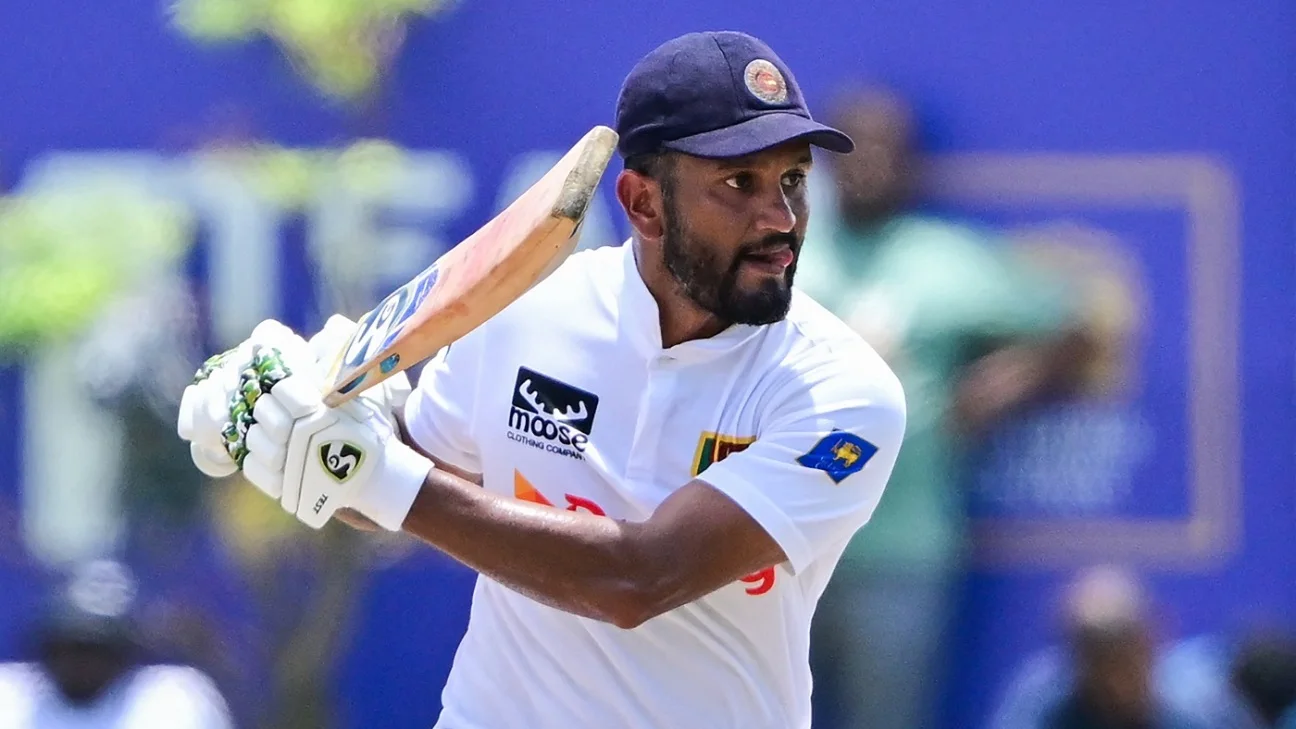This week, Dimuth Karunaratne will step onto the field for his 100th Test match, a milestone that places him among Sri Lanka’s greatest cricketers. Yet, his career has rarely been met with the fanfare reserved for the game’s superstars. An unassuming, hard-working opener, Karunaratne has quietly built a legacy defined by consistency and resilience, thriving in an era where opening the batting in Test cricket has never been more difficult.
Since the start of 2015, no other Test opener has accumulated more runs than Karunaratne. He has registered 15 centuries—joint-most among openers in this period—along with 34 half-centuries, making him one of the most consistent top-order batsmen of the last decade. His performances earned him a place in the ICC Test XI on three occasions, a feat no other opener has matched. Yet, his achievements often go unnoticed in a cricketing world that rewards flamboyance and aggressive stroke play over the grind and grit that have defined Karunaratne’s batting.
In an age where the dominance of fast-paced cricket and white-ball superstars overshadow Test specialists, Karunaratne’s approach remains refreshingly old-school. He thrives on patience, occupying the crease for hours, countering hostile seam attacks, and navigating spinning conditions with tactical precision. Grinding out half-centuries on dry pitches, negotiating treacherous new-ball spells, and manipulating spinners to maintain a steady scoring rate may not grab headlines, but they are invaluable attributes for any Test opener. However, in the modern cricketing ecosystem, such skills are often overlooked, akin to being the world’s finest air-conditioning repair mechanic while others revel in the glamour of high-profile professions.
The difficulty of Test opening has only intensified over the past decade. Since 2015, openers worldwide have averaged just 33.71, significantly lower than in previous eras—37.17 in the 2000s, 35.50 in the 1990s, and 34.76 in the 1980s. New challenges have emerged, with spinners now extracting more bite from harder seams, and pace bowlers regularly exceeding 140kph with the new ball. In Sri Lanka, the challenges are even greater, as humid conditions allow the new ball to swing sharply while dry pitches offer unpredictable bounce. Despite these obstacles, Karunaratne has held firm, averaging 33.6 in Sri Lankan conditions since 2015—his contributions lifting that number significantly.
His career has not been one of privilege or special treatment. Unlike other Sri Lankan batting prodigies earmarked for greatness, Karunaratne has had to earn every opportunity. While many of his contemporaries received unwavering support from selectors and coaches, he was often overlooked. His batting is not the most elegant, and his career is littered with gritty thirties and laborious half-centuries. But in the end, the scorecard only records the runs, not how they were scored—and Karunaratne has produced them in abundance.
In a period when Sri Lanka’s Test fortunes have waned, Karunaratne has been a rare beacon of stability. Once a dominant force in world cricket, Sri Lanka’s win-loss ratio in Tests has plummeted from 1.31 (2005-2014) to 0.81 since 2015. The decline has been largely due to the inability to replace the likes of Muthiah Muralidaran, Rangana Herath, Chaminda Vaas, Lasith Malinga, Kumar Sangakkara, and Mahela Jayawardene. Yet, when it comes to openers, Karunaratne’s numbers challenge the notion that Sri Lanka no longer produces world-class cricketers. While Sanath Jayasuriya and Tillakaratne Dilshan were more explosive and Marvan Atapattu more technically refined, none have matched Karunaratne’s volume of runs. His 7079 runs at the top of the order remain unparalleled in Sri Lankan cricket history.
Despite his success, Karunaratne has never been the golden boy of Sri Lankan cricket. He was never touted as the next great batter, nor was he nurtured in the way that some of his more celebrated teammates were. Instead, he has endured short selection leashes, battled through lean patches, and proven his worth time and again. His career is built on hard-earned runs rather than hype and expectations. Those prods outside off stump, the frequent lbw shouts, and the inside edges onto his pads have been part of his game. But so, too, have been the innings that have frustrated opponents, where he has refused to give his wicket away, accumulating runs when his team needed them most.
His record does have a clear bias—he is particularly dominant against spin, which explains why 81% of his centuries have come in Asia. However, he has also conquered conditions in South Africa and New Zealand, proving his adaptability. If there is a definitive measure of his ability, it is his performances against the formidable spin duo of Ravindra Jadeja and R Ashwin. He has produced Test centuries against them in Colombo (2017) and Bengaluru (2022), innings that epitomized his approach—scratchy, unglamorous, but highly effective. He rarely bullied bowlers but instead found ways to survive, to pinch extra runs, and to extend his innings into meaningful contributions.
Yet, all great careers must come to an end. Karunaratne has not announced his retirement, but the signs are there. In 2024, he averaged just 29.66, struggling against pace spearheads like Kagiso Rabada and Mitchell Starc, the latter having dismissed him nine times in Tests. Regardless of how he finishes his career, Sri Lanka’s Test calendar remains sparse—only four Tests are scheduled for 2025, a stark contrast to the packed itineraries of cricket’s financial powerhouses. Even if he defies the odds and produces a few more masterful innings, the opportunities to extend his legacy are limited.
With Karunaratne reaching his 100th Test, it is worth pondering how many more Sri Lankan cricketers will achieve this milestone. The country has produced just seven players to reach this landmark—Jayasuriya, Muralidaran, Vaas, Sangakkara, Jayawardene, Angelo Mathews, and now Karunaratne. Among them, Karunaratne is arguably the least celebrated. But no one can deny that he belongs in this elite company. Others have enjoyed the aura of stardom, the weight of legend, and the benefit of hype. Karunaratne’s career, in contrast, has been built solely on pragmatic, hard-earned runs. And that, in itself, is a legacy worth celebrating.




